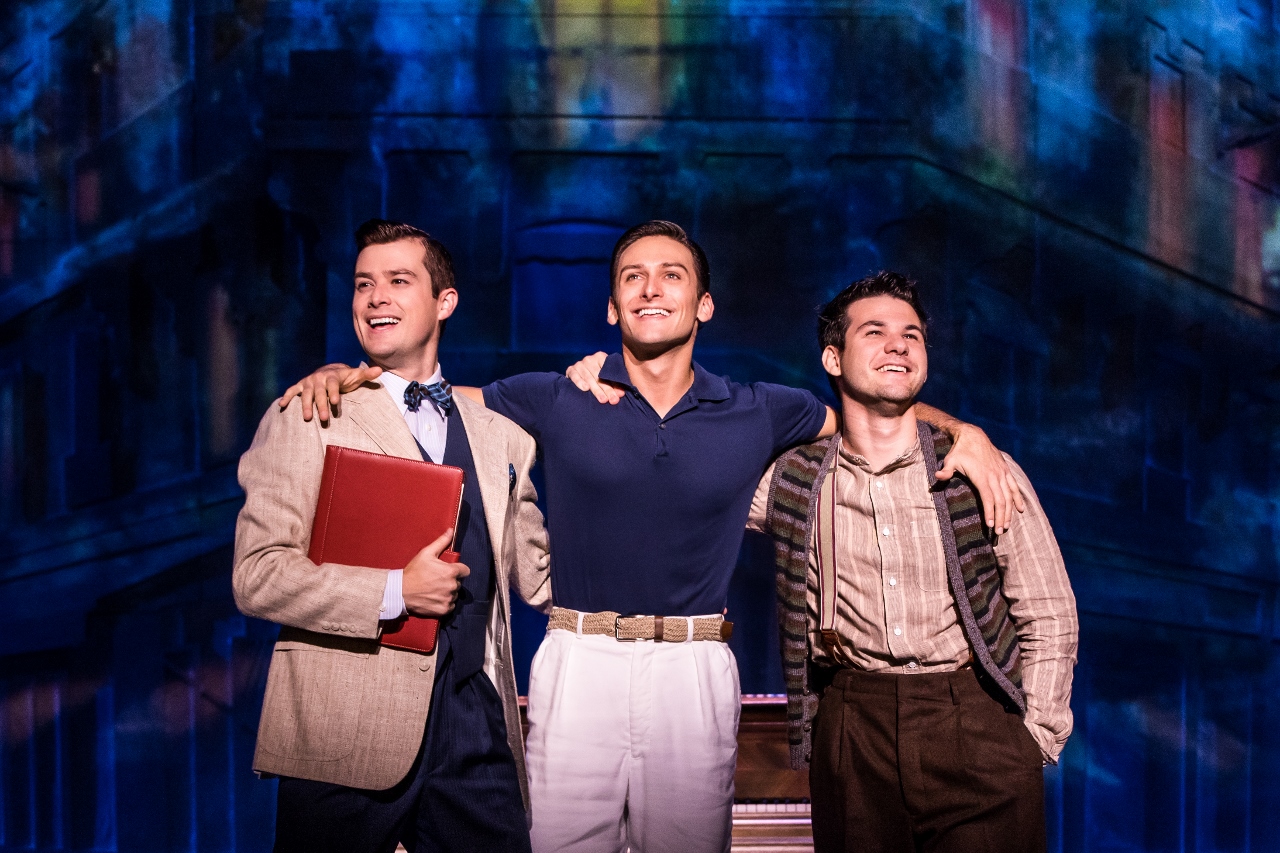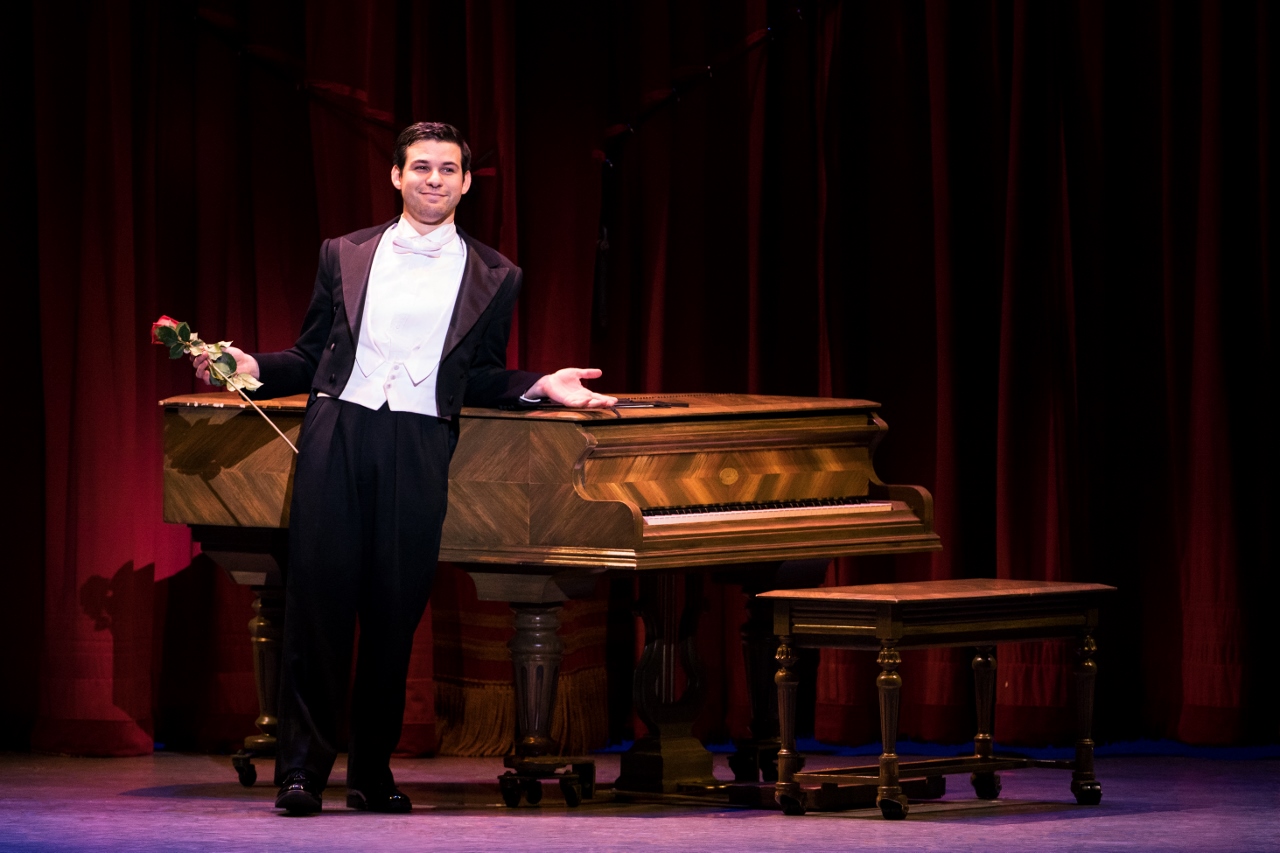PARIS AS A PAS DE DEUX
The opening image’”a baby grand piano under the Arc de Triomphe’”suggests the rest. The hopeful harbinger of a new normality, the beloved 1951 film An American in Paris employed George and Ira Gershwin’s gorgeous songs and supple lyrics to celebrate a postwar romance that healed, well, whatever wounds musicals can fix. Like the equally wonder-working Brigadoon, it was a cross-cultural amalgam of Yankee spunk and a quieter, older mindset: Each gained from the other.
Set in Paris in 1945, it depicts a love triangle that will yield, as the title suggests, a romantic merger of brash American know-how (that defeated the Nazis with help from the French resistance) and Gallic savoir-faire. As before and always, art’”i.e., ballet’”improves on life and certainly on politics. If An American in Paris turns love into diplomacy, its superb title ballet transformed dance into a multifaceted tribute to the once and future Paris, invoking Toulouse-Lautrec, memories of Montmartre, the grand lobby of the Paris Opera, and the magnificent fountains of the Place de la Concorde.
It requires very cinematic projections (brilliant brush strokes capturing the pulse of Paris and its iconic, impressionistic landmarks) for this 2015 musical adaptation, with a serviceable but stolid script by Craig (Prelude to a Kiss) Lucas, to honor if not equal the celluloid make-believe of the MGM classic. Classical choreographer Christopher Wheeldon (who last year molded the Joffrey Ballet’s Nutcracker into a glorious vision of the Columbian World’s Fair) works overtime to distract from, if not rival, Gene Kelly’s splendid feats of feet with an incandescent Leslie Caron. The result is worthy of the inspiration.
Director Vincent Minnelli’s movie remains inimitably irreplaceable, Alan Jay Lerner’s witty script rich with postwar cynicism vying with Eisenhower-era expectations. Neither milestone is threatened here. But for sheer suave spectacle, 66 years later, An American in Paris, its national tour now at the Oriental Theatre, delivers the musical equivalents to film magic to make us still care. Plus this music must always matter, even lesser known ballads like “I’ve Got Beginner’s Luck” and “For You, For Me, For Evermore.” Unlike Cole Porter, who mourned the Nazi-occupied capital with “The Last Time I Saw Paris,” Gershwin never saw goosesteppers on the Champs Élysées: His pre-war ballet carries a driving innocence that perfectly combines American jazz with French insouciance. No postwar disillusionment, no Cold War caution, just a very percussive Valentine to “la ville des lumieres.”
The familiar plot intertwines the lives and loves of sardonic expatriate narrator Adam Hochberg (Etai Benson), an acerbic wounded vet and budding composer (think Oscar Levant); Henri Baurel (Nick Spangler), at once a scion of French moguls, a frustrated Chevalier-style, song-and-dance man (in the Art Deco extravaganza “I’ll Build a Stairway to Paradise”), and, here, a possible closet case; and, especially, Jerry Mulligan (Ryan Steele alternating with McGee Maddox) as the hard-hoofing ex-G.I. (“Beginner’s Luck”) with art in his heart, designs for sets, and very “Fidgety Feet.”
What connects all three dreamers is Lise Dassin (Sara Esty alternating with Leigh-Ann Esty), a quintessentially Parisian ingenue and promising ballerina. Instantly smitten (“’S Wonderful”), Jerry only later discovers that Lise is engaged to boulevardier Henri, more out of respect for his civilian heroism during the war than ardor for a shared future. By then Jerry finds himself enmeshed if not entangled with Milo Davenport (Emily Ferranti), a wealthy dilettante who will end up, like Adam, the odd lover out (“But Not for Me”). As for Henri, he is destined to pursue a passion “beyond the fairer sex”’”wink, wink, nudge, nudge. At the end, working respectively as composer, investor and designer/dancer, Adam, Henri and Jerry collaborate on the title ballet. Its success will anoint the lead dancers as true lovers.
Music adapter/arranger Rob Fisher richly refurbishes Gershwin wonders like “I Got Rhythm,” here an enthralling whirl of Parisian pedestrians, the incredibly rhetorical question “Shall We Dance?,” and the enticing duet “Liza,” performed quai-side of a Seine embankment and swirling as smoothly. The picture-crazed production effortlessly interweaves light-paintings by 59 Productions, Natasha Katz’ wizard “lumiere,” and Bob Crowley’s dazzling flying and rapidly rolling sets and his Dior/Yves St. Laurent/Chanel-spun costumes. Washed-together watercolors, sudden, size-shifting sketches, Mondrian-like horizontals and Magritte-like imagery’”as much as movement and acting, these dreamy pictorials make this musical its own vision quest.
The one design disappointment is the artfully danced but regrettably austere title ballet. As if uneager to distract from the dancing or unwilling to challenge MGM studio’s elaborate stylized sets, the musical’s creators settle for a modernist backdrop, an abstract still-life that makes the ballet, seen both backstage and from front row, seem less special than its score or its source. But then the romantic chemistry between Steele’s Jerry and Esty’s Lise is no more combustible than the choreography: It’s at least consistent.
Never mind: At the core of this screen-to-stage reclamation are 17 Gershwin compositions, impeccably played by David Andrew Rogers’ 13-person orchestra. If the songs are an excuse for the story, they serve and save their show.
photos by Matthew Murphy (click on image for larger picture)
An American in Paris
national tour
reviewed at the Oriental Theatre (L.A. run ends ends August 13, 2017)
for tickets, call 800.982.2787 or visit Broadway in Chicago
tour continues through July, 2018
for dates and cities, visit An American in Paris













